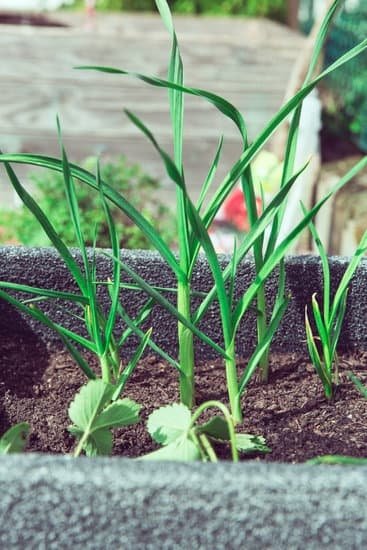Are you looking for fresh, organic produce right from your backyard? In this article, we will explore various ideas for veggie gardens, helping you get started on your journey to growing your own delicious and nutritious vegetables. Whether you have a spacious yard or just a sunny balcony, there are plenty of options to consider when starting your own veggie garden.
One of the main reasons why people choose to grow their own veggies is the ability to control what goes into their food. By planting and harvesting your vegetables, you can ensure that they are free from harmful chemicals and pesticides. Additionally, veggie gardening allows you to enjoy fresh produce at its peak ripeness, enhancing both the flavor and nutritional value of your meals.
Beyond the health benefits, gardening can also be a therapeutic and rewarding experience. It provides an opportunity to connect with nature, reduce stress levels, and engage in physical activity. With the right knowledge and resources at your disposal, creating a thriving veggie garden can be both fulfilling and enjoyable. Let’s dive into the world of veggie gardening and explore how you can cultivate your very own bountiful harvest.
Choosing the Right Location for Your Veggie Garden
When it comes to starting a veggie garden, one of the most crucial decisions you’ll make is choosing the right location for your plants to thrive. The success of your veggie garden depends greatly on its positioning, as factors like sunlight, soil quality, and water availability can significantly impact the growth of your vegetables.
Ideally, your veggie garden should be situated in an area that receives at least 6-8 hours of sunlight per day, as most vegetables require ample sunlight for healthy development.
Additionally, it’s important to consider access to water when selecting a location for your veggie garden. Vegetables need consistent watering to grow properly, so having easy access to a water source is essential. If possible, choose a spot that is close to a water outlet or install a drip irrigation system to ensure your plants receive adequate moisture throughout the growing season.
Furthermore, pay attention to the quality of the soil in the chosen location. Most vegetables thrive in well-draining soil rich in organic matter. Conduct a simple soil test to determine the pH level and nutrient content of the soil before planting.
If necessary, amend the soil with compost or other organic materials to create a nutrient-rich environment for your veggies to flourish. By carefully selecting the right location for your veggie garden and addressing these key factors, you’ll set yourself up for success and enjoy bountiful harvests of homegrown produce.
Essential Tools and Supplies for Veggie Gardening
When starting your own veggie garden, having the right tools and supplies is essential for success. Whether you are a seasoned gardener or just beginning, here are some items you should consider adding to your collection:
- Garden Trowel: This small hand tool is perfect for digging small holes for seeds or plants, transplanting seedlings, and loosening soil.
- Gardening Gloves: Protect your hands from dirt, thorns, and sharp objects while working in the garden.
- Hoe: A hoe is useful for weeding, breaking up soil, and shaping planting rows.
- Watering Can or Hose: Ensure your veggies get the right amount of water with a watering can or a hose with a spray attachment.
In addition to tools, there are some supplies that will help make veggie gardening easier and more successful. Consider investing in:
- Seeds or Seedlings: Purchase high-quality seeds or seedlings of the vegetables you want to grow in your garden.
- Fertilizer: Choose a fertilizer specifically formulated for vegetables to provide them with the nutrients they need to thrive.
- Mulch: Mulch helps retain moisture in the soil, suppresses weeds, and regulates soil temperature.
By having the essential tools and supplies on hand, you will be well-equipped to start your veggie garden and enjoy a bountiful harvest of homegrown produce. Happy gardening.
Planning Your Veggie Garden Layout
When it comes to establishing your veggie garden, one of the critical decisions you’ll need to make is determining the layout. The layout of your garden can significantly impact the success of your vegetable plants and make a difference in the overall aesthetics of your outdoor space. There are several options to consider when planning your veggie garden layout: raised beds, containers, or traditional in-ground planting.
Raised beds are an excellent choice for veggie gardens as they provide better drainage, warmer soil temperatures, and easier access for planting, weeding, and harvesting. They also allow you to create a more organized and visually appealing garden layout. Containers offer flexibility for those with limited space or poor soil quality.
You can grow a variety of veggies in containers on patios, balconies, or even windowsills. In-ground planting is the traditional method of growing vegetables directly in the ground and may be suitable for larger gardening spaces.
Regardless of the layout you choose for your veggie garden, proper spacing between plants and rows is essential to ensure adequate sunlight exposure and airflow. Consider the mature size of each vegetable plant when determining how far apart they should be planted. This will help prevent overcrowding and competition for nutrients among your crops. By carefully planning out your veggie garden layout, you can maximize productivity and enjoy a bountiful harvest throughout the growing season.
| Advantages | Disadvantages |
|---|---|
| Better drainage | Potential extra cost |
| Warmer soil temperatures | May require more frequent watering |
| Easier access for planting | Limited space constraints |
Best Vegetables to Grow in Your Veggie Garden
When it comes to deciding on the best vegetables to grow in your veggie garden, considering seasonal varieties and succession planting can greatly enhance your harvest throughout the year. By choosing a mix of vegetables that thrive in different seasons, you can enjoy a continuous supply of fresh produce from your garden.
In the spring, cool-season crops like lettuce, spinach, kale, radishes, and peas are excellent choices for early planting. These veggies prefer the cooler temperatures and will provide a bountiful harvest before the heat of summer sets in. As the weather warms up, transitioning to warm-season crops such as tomatoes, peppers, cucumbers, squash, and beans will ensure a steady supply of summer favorites.
Succession planting is another key strategy for maximizing your veggie garden’s productivity. This involves planting small quantities of crops at regular intervals to stagger harvest times and extend the growing season. For instance, sowing a few rows of lettuce every 2-3 weeks ensures a continuous harvest instead of a single large crop all at once.
| Vegetable | Season |
|---|---|
| Lettuce | Spring/Fall |
| Tomatoes | Summer |
| Squash | Summer |
By carefully selecting seasonal varieties and implementing succession planting techniques in your veggie garden, you can create a diverse and abundant harvest throughout the year. Experiment with different combinations of vegetables to discover which ones thrive best in your specific climate and growing conditions. With proper planning and care, your veggie garden will not only provide you with delicious homegrown produce but also a rewarding gardening experience.
Tips for Soil Preparation and Fertilization
Soil preparation and fertilization are crucial steps in ensuring a successful veggie garden. The quality of your soil directly impacts the health and growth of your plants, so taking the time to properly prepare it is essential. Here are some tips to help you get started on the right foot:
Test Your Soil
Before planting anything, it’s important to test your soil to determine its pH level and nutrient content. You can purchase a DIY soil testing kit or send a sample to a lab for more detailed analysis. Based on the results, you can then adjust your soil’s pH levels and add any necessary nutrients.
Amend Your Soil
Once you know what your soil needs, it’s time to amend it accordingly. Adding organic matter like compost, aged manure, or shredded leaves can improve the texture and fertility of your soil. Consider mixing in some perlite or vermiculite for improved drainage as well.
Fertilize Wisely
While organic matter is great for improving soil structure, additional fertilization may be needed throughout the growing season. Organic fertilizers like fish emulsion, seaweed extract, or compost tea can provide a slow-release source of nutrients for your veggies. Be mindful not to over-fertilize, as this can harm your plants rather than help them.
By following these tips for soil preparation and fertilization, you’ll be setting up your veggie garden for success from the start. Remember that healthy soil leads to healthy plants, which in turn leads to bountiful harvests of delicious homegrown vegetables. So roll up those sleeves, get dirty in the garden, and watch your veggies thrive with proper care and attention.
Pest and Disease Management in Veggie Gardens
Natural Predators
One effective way to control pests in your veggie garden is by attracting and supporting natural predators. Ladybugs, lacewings, and praying mantises are all beneficial insects that prey on common garden pests like aphids, caterpillars, and mites. You can encourage these natural predators to visit your garden by planting flowers that attract them or by providing shelter such as bug hotels.
Companion Planting
Companion planting is another organic pest management strategy that involves growing certain plant combinations together to deter pests or attract beneficial insects. For example, planting marigolds near your tomatoes can help repel nematodes, while growing basil near your peppers can attract pollinators like bees and beneficial insects like ladybugs. Researching companion planting combinations for your specific vegetable crops can help improve overall pest resistance in your garden.
Organic Pesticides
If pests become particularly problematic in your veggie garden, there are still organic pesticide options available for control. Neem oil, insecticidal soap, and diatomaceous earth are all examples of organic substances that can effectively manage common garden pests without harming beneficial insects or the environment.
When using organic pesticides, it’s important to follow the instructions carefully and apply them during non-windy periods when pollinators are less active to minimize any unintended impacts on helpful insects. By incorporating these organic pest management strategies into your veggie garden routine, you can promote a healthy ecosystem while safeguarding your precious crop from potential threats.
Harvesting and Enjoying the Fruits of Your Labor
Harvesting the fresh produce from your veggie garden is a rewarding experience that can be elevated even further with creative recipes and cooking tips. Whether you have an abundant supply of tomatoes, peppers, zucchinis, or leafy greens, there are numerous delicious dishes you can prepare using your homegrown veggies. From simple salads to hearty soups, stir-fries to roasted vegetables, the possibilities are endless when it comes to incorporating fresh produce into your meals.
One idea for utilizing your veggie garden harvest is to create a signature dish that highlights the flavors of your homegrown vegetables. For example, you could make a colorful and nutritious vegetable tart using a variety of veggies like eggplants, bell peppers, and cherry tomatoes.
Another tasty option is to whip up a batch of freshly made salsa using ripe tomatoes, onions, cilantro, and jalapeños from your garden. These dishes not only taste better with fresh ingredients but also allow you to showcase the fruits of your labor.
In addition to cooking with your homegrown veggies, preserving methods such as pickling, fermenting, or freezing can help extend the shelf life of your harvest. By pickling cucumbers or green beans from your garden, you can enjoy their crunchy goodness long after the growing season has ended.
Alternatively, fermenting cabbage into sauerkraut or kimchi provides gut-healthy probiotics while preserving the nutrient content of the vegetables. With a bit of creativity and resourcefulness in the kitchen, you can savor the flavors of your veggie garden all year round.
Sustainable Practices in Veggie Gardening
Whether you are a seasoned gardener or just starting, incorporating sustainable practices in your veggie garden can benefit both the environment and your plants. One of the key sustainable practices is composting, which involves recycling organic waste to create nutrient-rich soil amendments.
By composting kitchen scraps, yard trimmings, and other biodegradable materials, you can reduce landfill waste while improving soil fertility in your garden. This eco-friendly approach not only reduces the need for chemical fertilizers but also promotes healthy plant growth.
Water conservation is another essential aspect of sustainable veggie gardening. By using techniques such as drip irrigation, mulching, and proper watering schedules, you can minimize water wastage and ensure that your plants receive adequate moisture. Conserving water not only helps protect this precious resource but also saves you time and effort in maintaining your garden. Consider collecting rainwater in barrels or installing a timer on your irrigation system to further optimize water usage.
Succession planting is a strategy used by many vegetable gardeners to maximize their harvest throughout the growing season. By planting different crops in succession, you can make the most of available space and resources while extending the bounty of fresh produce from your garden.
This approach allows you to enjoy a continuous supply of homegrown vegetables without overwhelming yourself with a single large harvest. With thoughtful planning and regular replanting, succession planting can help you make the most of your veggie garden all year round.
Conclusion
In conclusion, starting a veggie garden can be a fulfilling and rewarding experience for any home gardener. Beyond the convenience of having fresh produce right at your doorstep, the act of growing your own food offers a sense of satisfaction and connection to nature that is truly priceless.
The benefits of veggie gardening extend to not just physical health through access to nutritious, pesticide-free vegetables but also mental well-being as it provides a relaxing and therapeutic escape from the stresses of daily life.
Moreover, veggie gardening presents an opportunity for creativity and experimentation with various planting techniques, vegetable varieties, and sustainable practices. Whether you opt for raised beds, containers, or traditional in-ground planting, there are endless possibilities to explore in designing your ideal veggie garden space. Embracing organic solutions for pest and disease management, practicing water conservation methods, and incorporating composting into your routine are essential steps towards creating a thriving and eco-friendly vegetable garden.
Ultimately, the joy that comes from sowing seeds, nurturing plants, watching them grow, and finally harvesting the fruits of your labor is unparalleled. As you dive into this enriching journey of veggie gardening, remember to savor each moment spent in your garden and cherish the bountiful harvests that await you. So go ahead – get your hands dirty, unleash your green thumb, and enjoy the incredible journey of cultivating your own homegrown vegetables.
Frequently Asked Questions
What Is a Good Layout for a Vegetable Garden?
A good layout for a vegetable garden typically involves organizing the plants based on their sunlight and water requirements. It’s essential to consider the spacing between each plant to allow for growth and airflow. Companion planting can also be utilized to maximize space and deter pests.
What Are Some Garden Veggies Ideas?
When it comes to ideas for vegetables in a garden, there are so many options to choose from based on your preferences and climate. Some popular choices include tomatoes, peppers, zucchini, lettuce, carrots, beans, cucumbers, and herbs like basil and mint. Additionally, you could experiment with more unique varieties like kale or kohlrabi.
What Vegetables Grow Well Together?
Certain vegetables grow well together due to their complementary qualities or ability to repel pests naturally. For example, planting tomatoes alongside basil can enhance the flavor of both plants while deterring pests that are harmful to tomatoes. Carrots and onions thrive when planted together as they release chemicals that benefit each other’s growth.
Similarly, beans fix nitrogen in the soil which helps corn grow better when planted nearby in a symbiotic relationship. Experimenting with companion planting is a great way to discover which vegetables grow well together in your garden.

Welcome to my gardening blog! I am passionate about plants and enjoy sharing my knowledge and experiences with others. In this blog, I will write about everything related to gardening, from tips on how to get started to updates on my own garden projects.





